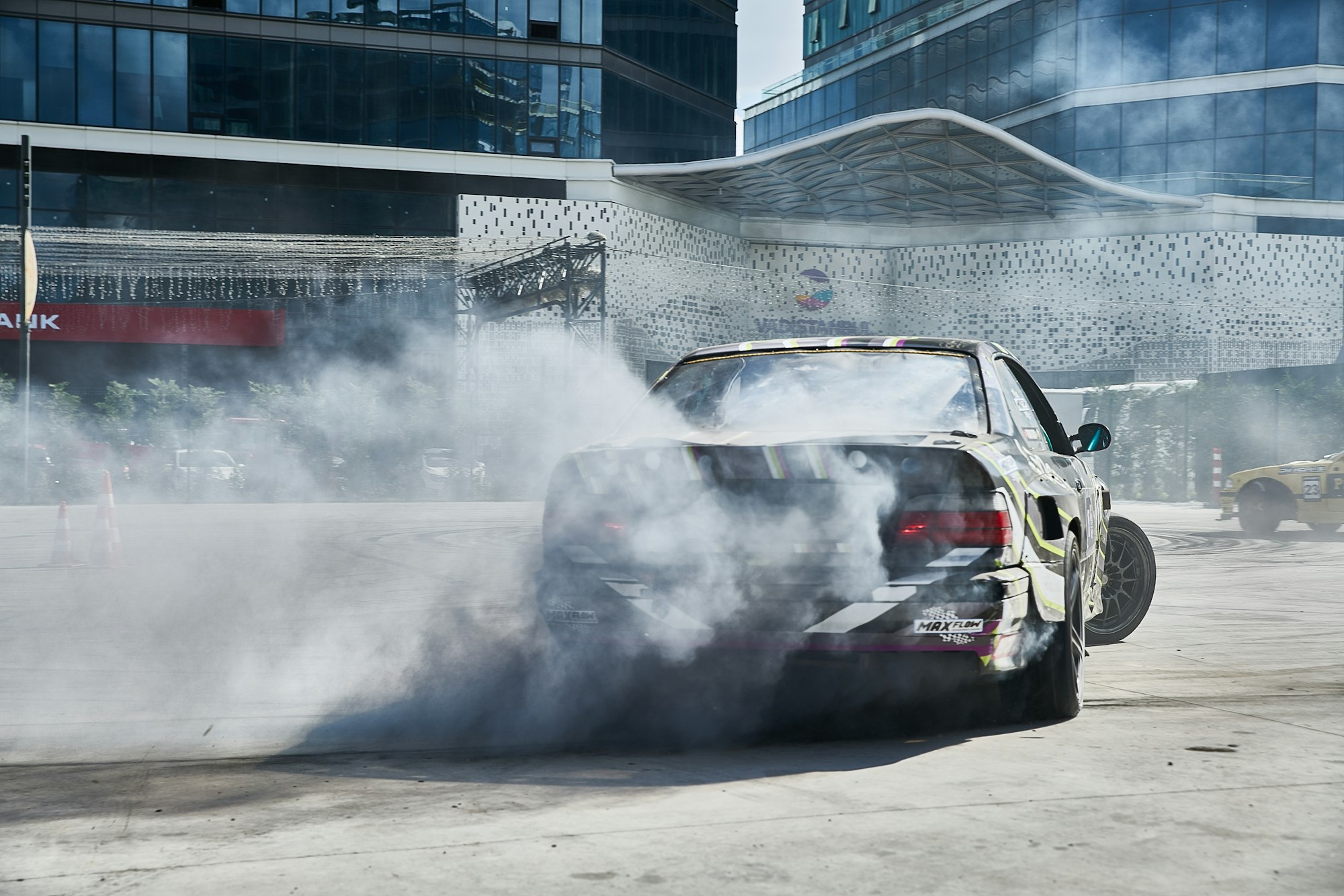If you're a fan of high-octane, adrenaline-fueled movies, these movies are probably familiar to you. From the intense hand-to-hand combat of John Wick to the epic car chases of the Fast and Furious franchise, action movies offer some of the most exciting and visually stunning moments in cinema. Many movie writers have explored the world of action screenplays, from the essential elements of a great action story to the techniques used to create thrilling action sequences.

Whether you're an aspiring screenwriter looking to break into the action genre or simply a fan of action movies who wants to learn more about the craft behind them, read on to find out more about what makes these movies so thrilling and how you can apply these techniques to your own action screenplays!
What is an Action Screenplay?
An action screenplay is a type of screenplay that focuses on a story that is driven by physical action and excitement. It often includes elements of danger, adventure, and suspense, and is typically associated with genres such as action, adventure, thriller, and science fiction.
An action screenplay typically contains detailed descriptions of physical actions, fight scenes, chase sequences, and other high-energy events. These descriptions may include camera angles, sound effects, and other technical details that help to convey the excitement and intensity of the action.
In addition to the physical action, an action screenplay may also feature complex characters, intricate plots, and emotional depth. This combination of thrilling action and compelling storytelling is what makes action screenplays so popular with audiences and filmmakers alike.

What is Role of Action in an Action Screenplay?
The role of action in screenplays is to provide excitement, entertainment, and thrills for the audience. Action in screenplay sequences can involve anything from car chases and gunfights to hand-to-hand combat and explosions. These scenes are typically high stakes and fast-paced, designed to keep the audience on the edge of their seats.
In an action screenplay, action also serves to advance the plot and develop the characters. Action scenes can reveal character traits, motivations, and conflicts. They can also serve as turning points in the story, driving the plot forward and raising the stakes for the characters.
However, action alone is not enough to make an action screenplay successful. The story and characters must also be compelling and engaging, with well-defined goals, obstacles, and motivations. The dialogue must be sharp and witty, and the pacing must be tight and consistent.
Ultimately, the role of action in an action screenplay is to create an immersive and exciting cinematic experience for the audience, while also telling a compelling story with interesting characters.
Tips for Writing Action in a Script
Writing action in a script encompasses describing the physical movements, events, and stunts that take place in a scene. This can include everything from fights and chases to explosions and car crashes.
When writing action in a script, it's important to provide clear and concise descriptions of what is happening on the screen, so that the director, actors, and other crew members can visualize the scene and bring it to life.

1. Use active language
Using active language in action screenplays means using verbs that denote action, rather than passive language that simply describes a state of being. This helps to create a sense of immediacy and urgency in the action scenes, making them more engaging and exciting for the audience.
In an action screenplay, using active language can help to create more dynamic and exciting action scenes. This means choosing verbs that are more specific and vivid, such as "smashed," "crashed," "exploded," "punched," "kicked," and so on. By doing so, the action scenes become more vivid and immersive for the reader, and easier for the director and actors to visualize and bring to life on screen.
2. Be specific
Using specific details to describe action in action screenplays means providing clear and vivid descriptions of what is happening in the scene. This can include details about the environment, the characters' movements, and the visual and auditory effects of the action. Using specific details in action scenes can also help to create a more unique and memorable story. By providing specific visual and auditory details, the scene becomes more distinct and less generic.
3. Include visual cues
Using descriptive language in the action lines of a screenplay can help guide the reader's imagination and create a clear mental image of what is happening on screen. This involves using specific and evocative language to describe not just the action, but also the visual and auditory elements of the scene, such as camera angles and close-ups.
Camera angles refer to the position of the camera in relation to the action, and can greatly affect how the scene is perceived by the audience. For example, a low-angle shot can make a character seem more powerful or intimidating, while a high-angle shot can make them seem vulnerable or weak. By using descriptive language to indicate the intended camera angles, the writer can help the reader to visualize the scene and create a more immersive experience.
4. Keep it concise
Action scenes should be concise and to the point, without unnecessary detail or dialogue.
In the context of action screenplays, being concise in action scenes means writing them in a way that is clear, efficient, and to-the-point. Action scenes are typically fast-paced and intense, and audiences can quickly lose interest if the action drags on for too long or becomes bogged down in excessive details or exposition. By keeping the action concise and focused, the writer can maintain the momentum of the scene and readers can also remain engaged.
5. Consider pacing
Action scenes should be structured in a way that creates a sense of rising tension and excitement, while also providing moments of respite to prevent the audience from becoming overwhelmed or fatigued.
Pacing helps to build anticipation and keep the audience engaged throughout the scene. By alternating between moments of intense action and quieter, more contemplative moments, the writer can create a rhythm that draws the audience in and keeps them invested in the outcome of the scene.
Pacing is also important for creating a sense of emotional impact. By gradually building the tension and excitement of the scene, the writer can create a greater sense of release and satisfaction when the climactic moment finally arrives. Similarly, by providing quieter moments to let the audience process what's happening and catch their breath, the writer can create a greater sense of contrast and impact when the action kicks back into high gear.

What are the Processes involved in Writing an Action Screenplay?
Writing an action screenplay involves several processes. Here are the key steps you should consider:
1. Brainstorming
Brainstorming for an action screenplay involves generating and developing ideas for the plot, characters, settings, and action sequences that will make up the final script. This process is often done collaboratively, with writers, directors, and producers working together to come up with the most compelling and exciting concepts for the film.
2. Outlining
Outlining an action screenplay means creating a structured, detailed plan of the story, characters, and action sequences that will be included in the final script. The outline serves as a roadmap for the screenwriter, helping them to organize their ideas, develop the plot and characters, and identify any potential issues or plot holes before they start writing the script itself.
3. Character development
Character development in an action screenplay refers to the process of creating and showing the growth, change, and evolution of the main characters throughout the story, particularly in how their experiences shape them.
In an action screenplay, the main characters are typically involved in intense and high-stakes situations, such as fighting, chasing, or survival scenarios. The challenges and obstacles they face often reveal their strengths, weaknesses, values, and beliefs.

Through character development, the audience can see how the main characters respond to these challenges, how they learn from their mistakes, and how they become more resilient, courageous, or compassionate over time. This process can make the characters more relatable, engaging, and memorable for the audience, and can also help to deepen the themes and messages of the story.
4. Writing the script
Begin writing your screenplay, starting with the opening scene and working through to the climax and resolution. Your script should include action sequences, dialogue, and description.
While writing your first draft, focus on the action. The action is often the driving force of the story. Make sure to focus on crafting exciting, visually dynamic action sequences that move the story forward. Remember that a screenplay is also a visual medium. Write in a way that allows the reader to visualize the action on the screen, using clear and concise language that conveys the tone, pacing, and atmosphere of each scene.
Remember, the first draft is just that - a first attempt at getting your ideas down on paper. Don't worry too much about getting everything perfect right away. Instead, focus on getting your story out of your head and onto the page, and worry about revising and refining later.
5. Formatting
Format your screenplay according to industry standards. This includes using the correct font and margins, and including scene headings, action lines, and dialogue.
Focusing on formatting while writing an action screenplay can be challenging, but it's an important aspect of the screenwriting process. One way to manage this is by using screenwriting software. Screenwriting software platforms have built-in formatting templates that allow you to simply write your script, while the software takes care of formatting.
Using a writing platform like JotterPad can help you take care of all the formatting for you from the very beginning. Lighten this load by using JotterPad to help with formatting your screenplay as you go along. It rids you of the hassle of going back in to fix formatting multiple times or after finalizing your action script. It adheres to industry-standard formatting guidelines for multiple kinds of screenplays by offering screenplay templates and story-writing templates for you to use as well.

Take the time to study and learn the standard formatting guidelines for screenplays as well. Familiarize yourself with elements such as scene headings, action lines, dialogue, and parentheticals, and ensure you are using them correctly.
6. Editing and revising
Once you have completed your first draft, review your screenplay and make any necessary revisions. This might include tightening the pacing, improving the dialogue, or adding more action sequences.
Polish your screenplay by proofreading for grammar and spelling errors, and ensuring that the formatting is consistent throughout.
During your revision, look for any areas that need further development or refinement. This is also a good time to seek feedback from other writers, directors, or producers to get their input and ensure that the story is as compelling and engaging as possible.
It is important to keep in mind that writing a screenplay can be a challenging and time-consuming process. Just like other genres of screenplays, action screenplays require a strong grasp of story structure, character development, and action sequences, as well as the ability to write compelling dialogue and description.

